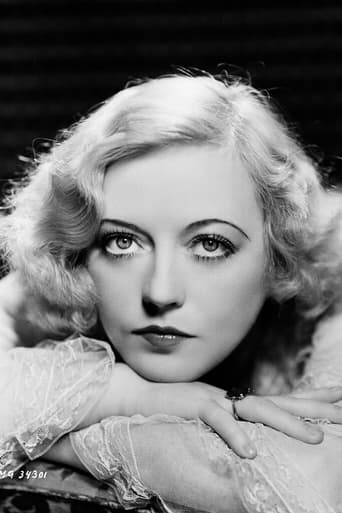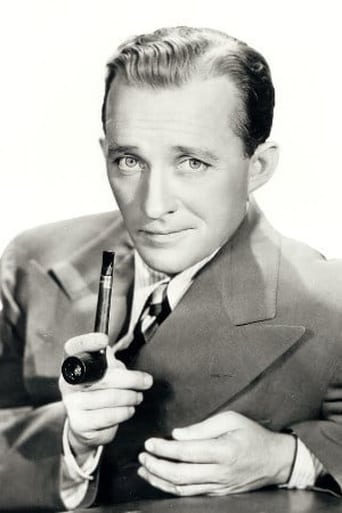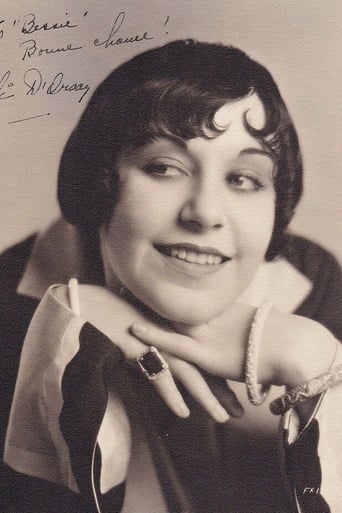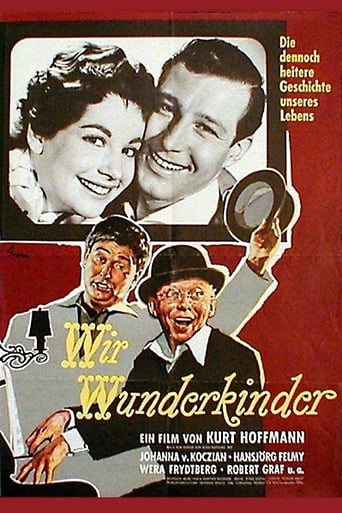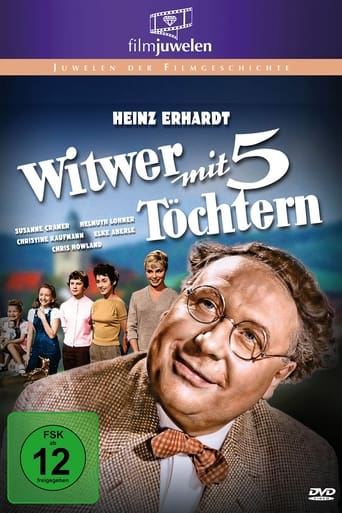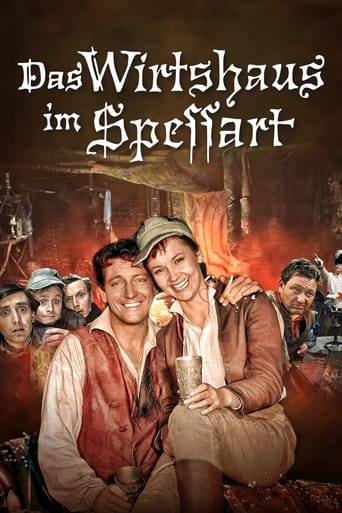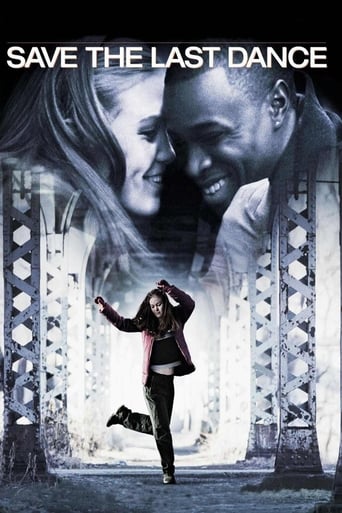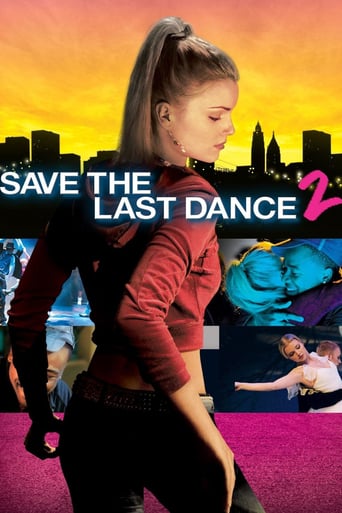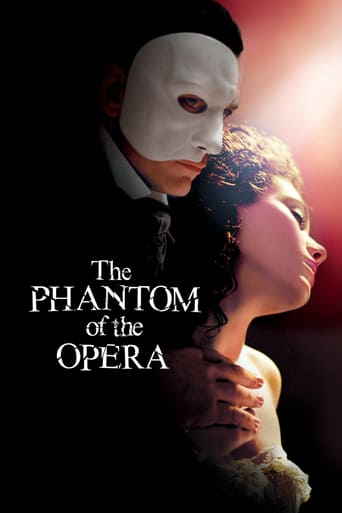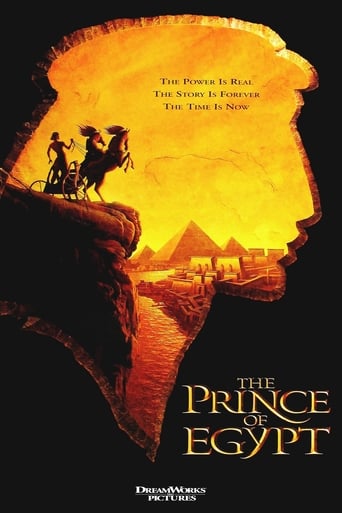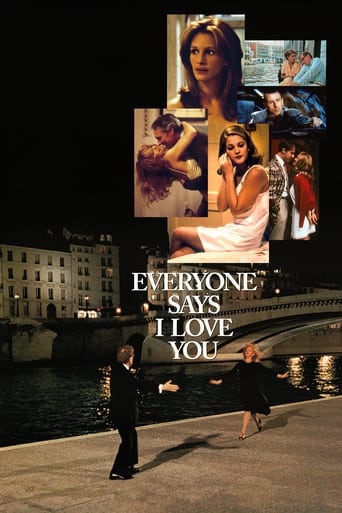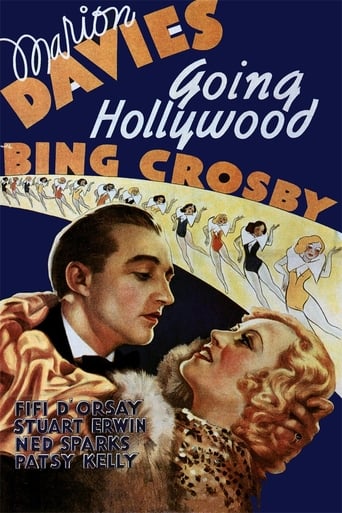
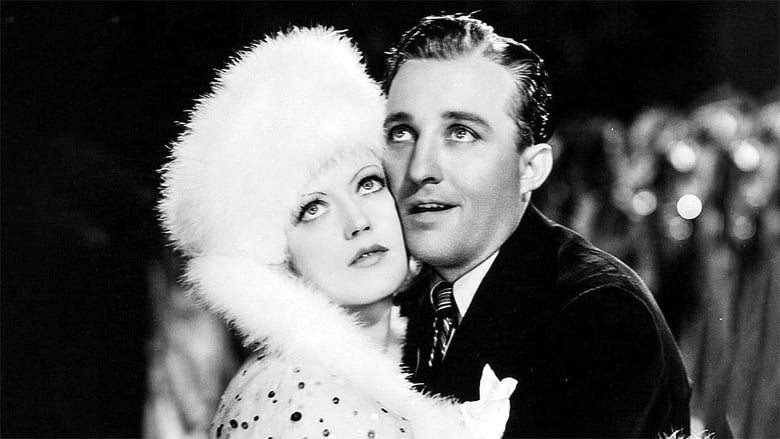
Going Hollywood (1933)
The film tells the story of Sylvia, a French teacher at an all-girl school, who wants to find love. When she hears Bill Williams on the radio, she decides to go visit and thank him. However, difficult problems lay ahead when Lili gets in the way.
Watch Trailer
Cast
Similar titles
Reviews
Simply A Masterpiece
Clever, believable, and super fun to watch. It totally has replay value.
It is not deep, but it is fun to watch. It does have a bit more of an edge to it than other similar films.
The story-telling is good with flashbacks.The film is both funny and heartbreaking. You smile in a scene and get a soulcrushing revelation in the next.
The actress Marion Davies, when she is now remembered at all, is remembered as the young(ish) mistress of William Randolph Hearst, the newspaper magnate who more or less bankrolled her Hollywood career. As such, it's widely assumed that she had no talent, except in the eyes of the devoted Mr Hearst. This at least was the impression given by her supposed parody in Citizen Kane, an image which though indirect has tarnished her memory no end. But whatever the truth about her, the amount of money thrown into her productions means they afford at least a treat or two.Going Hollywood, for example, pairs her with a young Bing Crosby. It's clear that at this point the studio didn't really think of him as much more than a good-looking crooner and weren't really pushing his personality, but he certainly adds musical credence to the production, and his laid-back sense of humour is occasionally allowed a tease or two. Another delight of the cast is 1930s comedy institution Ned Sparks, who with his inimitable manner can make even the simplest of lines sound funny. There's a real no-no however when a jumped-up Stuart Erwin vehemently puts Sparks down, a moment which simply looks embarrassing. There ought to have been a rule in Hollywood – nobody gets the better of Ned Sparks.The story of Going Hollywood was by the very prestigious 30s writer Frances Marion (she also wrote The Champ, among others), and the screenplay is by acclaimed romcom expert Donald Ogden Stuart. It is of course, an absolute slice of silliness, the opening business with a rebellious Davies giving up her job as a teacher as if it was something she had been forced into setting the tone for things to come, but Frances Marion's simplistic tale of a girl making it big in movies is the very quintessence of MGM dreaminess, and Stuart's sharp wit gives it a nice gloss. Logic and depth barely matter in a fairytale such as this.The list of big names continues, with music by Nacio Herb Brown and Arthur Freed (you know, of Singin' in the Rain fame). The songs are pretty and the smooth arrangement suits Crosby well. What is nice though is the way they are used. Freed's lyrics only relate vaguely to the material, but each number is nevertheless woven into the narrative in a number of interesting ways. "Beautiful Girl" is part of a radio broadcast which a pyjama-sporting Crosby delivers while doing his morning business. "We'll Make Hay while the Sun Shines" takes place in a dream sequence. In other words, the narrative does not take a break for the music, and the songs are never merely presentational performances. This may have been a contribution of Walter Wanger, who always tended to oversee a flowing style in his pictures.Then again, it might also have been influenced by director Raoul Walsh (incidentally a pal of Hearst) who, like in the musical numbers, never made movies as a presentation. Walsh's camera is almost always right inside the action, either looking in on it (the number of instances of characters looking into lens is high in Going Hollywood) or looking outwards (as in several point-of-view shots). Walsh likes to place his audience where his characters are, especially at key moments, giving a real intensity to the scenes between Davies and Crosby. This closeness of Walsh's style gives a real cramped feeling to many of the interiors, and a sense of romantic escapism lies in shots like Davies staring at the stars out of her bedroom window or Crosby gazing up at the cavernous roof of the railway station. In a funny kind of way these moments link to Walsh's westerns, where the homesteads were always dull and squalid while the plains were vast and inviting.So Going Hollywood sees its star supported by a big wall of talent. But what about Ms Davies herself? She is really not all that bad. Her style is quite reserved, not at all vulgar or exaggerated as one might expect, and she does have a flair for comic expression which in this kind of picture makes up for her lack of a good singing voice. She certainly doesn't deserve the reputation given to her by Citizen Kane (which Orson Welles belatedly stated was not intentional). Still, there is a reason she wasn't an especially popular star and needed the support of her millionaire boyfriend. If you look at the most successful performers of the depression era, they are people like Will Rogers, Marie Dressler and Wallace Beery, who what they lacked in looks they made up for in rugged charm. An actress who was merely pretty and competent was hardly deemed special in 1933.
Bing Crosby truly was the quintessential vocalist of his time. I strongly recommend Gary Giddins bio on Bing; an excellent reference.Anyway, the story may be weak in this film, but the songs and Bing's clear baritone voice make up for it.An interesting tidbit about this film: Of course Marion Davies was W.R. Hearst's mistress, and Hearst financed the film. Ms. Davies thus took full advantage of the situation by showing up for filming at 10 AM, shooting a scene or two before a four hour lunch replete with all the catered trimmings and wines. The day wound down by 4PM.It's no wonder it took six months to shoot this film in an era when the typical film was shot in 2 weeks!
This musical comedy features beautiful Marion as a bored French teacher who runs off to Hollywood. Seems like a standard 30s musical. But wait. The narrative structure of this film is more complex than it at first seems. When Davies turns on the radio and gazes out at the night sky she starts to wish upon a star. Just as she says "I wish I may, I wish I might...." Bing Crosby's voice cuts across the moment as he begins the lyric of "Our Big Love Scene": "Don't waste the night in wishing..." as though in answer to Davies' wish upon a star. She sits up, startled, and packs her bags. So sets off not to go to Hollywood, but to find Crosby, who plays a famous radio singer about to embark by train to Hollywood to star in a picture. Crosby is also involved with the picture's French star, played by Fifi D'Orsay. As Crosby is packing up to go, and after a live broadcast of his singing "Beautiful Girl" to Sterling Holloway, Davies finds him. He brushes her off as just another fan and heads to the Grand Central Station, where he sings "Going Hollywood." On the train, who should show up but Davies. In today's context, Davies is certainly a crazed fan stalking her idol, but in 1933 her actions were (in the context of this film) acceptable. D'Orsay catches the two together (Davies is correcting Crosby's French pronunciation) and immediately suspects them of being up to something. D'Orsay is on the rampage because her maid has quit. Of course Davies becomes her maid, having taught French and all. The second time D'Orsay catches them together, she slaps Davies. She quits her job. Next we find Davies in Hollywood at "Central Casting," asking to see Crosby. She's turned away and meets Patsy Kelly, a film extra. They hit it off right away, and Kelly invites Davies to share her digs. The director walks by and hires them as extras in the film starring Crosby and D'Orsay.At Kelly's bungalow, Davies takes a nap and has a bizarre dream about herself and Crosby starring in a surreal production number called "We'll Make Hay While the Sun Shines." While Davies dreams, we are shown a huge close up of her face, which is occasionally superimposed over the dream-scene action so that we don't forget it's all a dream. The scene opens with Crosby and Davies in a cozy cottage. Crosby starts the song, and the couple is strolling through a field of giant, swaying daisies and then sitting in a carriage where Davies joins Crosby in a brief duet. They come upon a farm scene of dancing scarecrows . Suddenly Davies emerges from the dancers and takes center stage in a dance number. But Crosby and Davies are still sitting in the carriage. Davies points to herself dancing and asks Crosby, "me?" He nods and soon he also is in the dance number. A windstorm suddenly comes up and everyone is drenched by the downpour. Crosby and Davies run back to the cozy cottage where they sit by the fire, wrapped in blankets, while Crosby finishes the song. On the movie set, Davies once again finds Crosby. He's in between scenes when Davies approaches. She's in blackface and dressed like Aunt Jemima. He doesn't seem to notice that she is not really black. D'Orsay catches them again and slaps Davies for a second time.Next we're on location and D'Orsay is about to sing her big number, "Have You Heard." The number has a Cinderella theme with the blonde-wigged D'Orsay as the Prince. As she launches into the song, Sparks stops her and tells he she's doing it all wrong because she's doing it as a kooch dance. She throws a fit and storms off the set. Back in her trailer, Crosby tries to comfort her. Meanwhile, back on the set, the Radio Rogues do a series of impressions of current radio stars who include Kate Smith, Morton Downey, and Crosby's singing rival of the dayRuss Columbo. Davies is then coaxed into doing an impression (Davies was famous for her ability to mimic, and does so in several of her films). Of course she launches into an impression of D'Orsay singing "Have You Heard." D'Orsay hears this and marches out to catch Davies in mid-dance and hauls off and slaps her for a third time. This time Davies strikes back and delivers D'Orsay a black eye. D'Orsay quits and Davies is hired to star in the film! There is an abbreviated scene, with Davies and Crosby dating, with Crosby singing the wonderful "After Sundown." Later, Davies attempts to deliver some flowers to Crosby, but standing in the hallway outside his door she hears D'Orsay talking to Crosby.She lures Crosby to a Mexican bar and plies him with drinks, knowing he will be fired from the picture for being absent for days. Davies tracks him down yet again and tries to get him back but he's drunk and can't think straight. This sets up the film's best number and another dream sequence. Crosby sings "Temptation" while sitting at the bar and drinking what looks like absinthe. As he sings we see huge close-ups of D'Orsay (to match the close-ups of Davies in the previous dream sequence) and cutaway shots of a dance floor crowded with same-sex couples. In the bar itself, no one is dancing. As Crosby approaches the last notes of the song, he lifts his glass and drains the last drops. It's an amazing sequence.The scene shifts back to the film set where, after seeing a dance montage to "Have You Heard," Davies is about to film an elaborate production number. As she is about to begin the scene with Crosby's replacement, he can be heard reprising "Our Big Love Scene," and the lovers meet. End of film.
If you like to see the original crooner of all times and really the King of male singers. Bing was a great actor in this film along with super star Marion Davies, who was like the Marilyn Monroe during her days and even Jean Harlow. Marion Davies was also a long time friend of William Randolph Hearst, the newspaper magnet of California. Bing Crosby sings,"You were Temptation" and he must have charmed all the ladies hearts of those days. Wallace Berry, veteran actor has a brief role in this film and is uncredited along with the great Mae Clarke. This is really what Hollywood films were like in the Golden era of movies. It is a must view film.
